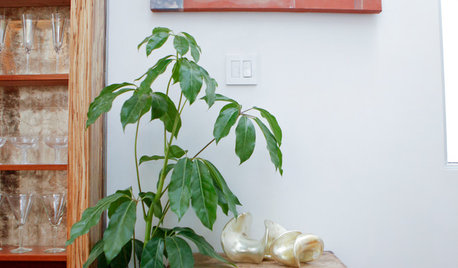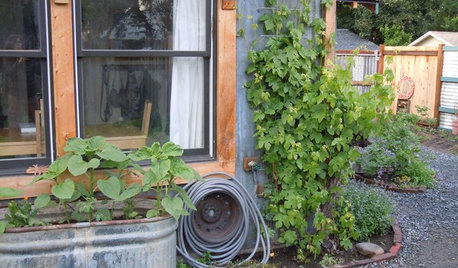Watering on a schedule
DaMonkey007
12 years ago
Related Stories

DECORATING GUIDESMeet a Houseplant That Doesn't Mind Neglect
Got better things to do than remember to water your houseplants on schedule? Schefflera will forgive and forget
Full Story
SAVING WATERXeriscape Gardens: How to Get a Beautiful Landscape With Less Water
Conserve water and make gardening much easier with the xeriscape approach’s 7 principles
Full Story
GARDENING GUIDESEssential Watering Tips for Your Edible Garden
To give your edible plants just what they need, check out these guidelines for how, when and how much to water
Full Story
GREEN DECORATINGEasy Green: Big and Small Ways to Be More Water-Wise at Home
These 20 tips can help us all make the best use of a precious resource. How do you save water in summer?
Full Story
GARDENING GUIDESEdible Gardening Essentials: Tips for Traditional Hand Watering
Save the expense and hassle of a complicated garden system with a simple watering can or inexpensive hose add-ons
Full Story
GARDENING GUIDES8 Unthirsty Plants Help You Save Water in Style
Spend less effort and money on your landscape with drought-tolerant and native plants that liven up your yard
Full Story
BATHROOM DESIGNWater Damage Spawns a Space-Saving Bathroom Remodel
A game of inches saved this small New York City bathroom from becoming too cramped and limited
Full Story
HOUZZ TOURSHouzz Tour: Battling the Tides Results in a Wondrous House on the Water
A complex construction effort pays off big-time with unobstructed views of Blue Hill Bay in Maine
Full Story
HOUSEKEEPINGHow to Keep the Sparkle in Your Mirrored Furniture
Your romance with mirrored pieces doesn't have to fade over time, when you schedule regular dates to fight fingerprints, dust and flaws
Full Story
FEEL-GOOD HOMERegain Calm With a New Weekly Routine
Having a day-by-day housekeeping schedule makes the chores a lot more manageable
Full StoryMore Discussions








stev32k
greenman28 NorCal 7b/8a
Related Professionals
Oconomowoc Landscape Architects & Landscape Designers · Wixom Landscape Architects & Landscape Designers · Barrington Landscape Contractors · Old Saybrook Landscape Contractors · Pikesville Landscape Contractors · Weslaco Landscape Contractors · Bensenville Landscape Contractors · Rialto Solar Energy Systems · Decatur Window Contractors · Carmichael Fence Contractors · Goodyear Fence Contractors · Lake Zurich Fence Contractors · Lenexa Fence Contractors · Woodland Fence Contractors · Saratoga Springs Fence ContractorsDaMonkey007Original Author